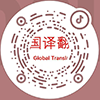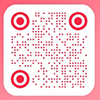Specific Solutions
How Much Does English Translation Cost per 1,000 Words: Influencing Factors and Selection Guide
With the acceleration of globalization, international trade, academic exchange, and cultural communication are becoming more frequent. English translation services have become an essential part of various fields. From business contracts to academic papers, technical manuals to legal documents, the demand for translation services continues to grow. So, how much does English translation cost per 1,000 words? What factors influence the price? This article explores the components of English translation pricing and offers practical advice for selecting translation services.
An Overview of the English Translation Market
As one of the most widely used languages globally, English translation demands span various industries, including business, law, medicine, technology, and academia. The cost of translation services can vary significantly depending on factors such as the type of content, translation difficulty, delivery time, and service quality. Generally, English translation is priced per 1,000 words (or per word), with high-specialty content such as legal and medical documents often costing more.
Main Factors Influencing English Translation Prices
1. Specialization of the Content
The content being translated plays a key role in determining the price. General business correspondence or advertising copy is usually less expensive to translate compared to medical, legal, financial, or technical documents. Specialized translations require the translator to not only have strong language skills but also in-depth knowledge of the field to ensure accurate use of technical terminology. Therefore, translation of high-tech or academic content, particularly in fields like medicine, law, and finance, typically costs more.
2. Length and Complexity of the Text
The length and complexity of the text directly impact the translation price. Longer or more complex papers require more time and effort to process, and translation costs typically increase accordingly. For example, papers involving complex statistical analysis, pharmacological studies, or clinical trials require translators with expertise in those areas, which results in higher prices.
3. Quality Requirements of the Translation
Different translation companies or service providers offer varying service levels. Some may only provide basic language translation, while others may offer detailed editing and proofreading services to ensure the paper meets the journal’s language requirements. The level of translation quality, whether it includes post-editing and refinement services, directly affects the final price.
4. Urgency and Delivery Time
The urgency of the translation is another important factor. Standard translation services typically have more flexible delivery timelines and are less expensive. On the other hand, expedited translations, which require the translation company to allocate additional resources to ensure quicker turnaround, come with an extra charge. Urgent translation services typically cost more, especially when a team of experts is required to work on the paper within a short time frame.
5. Requirements of the Target Journal or Client
Different journals and clients have different formatting and language requirements. For SCI or other high-impact journals, the language standard is generally much stricter, requiring additional editing and refinement, thus affecting the cost. Additionally, some journals may require specific experts for translation, further increasing the price.
How to Choose the Right English Translation Service
Choosing the right translation service is essential for ensuring your paper is accepted for publication or that your document is effectively communicated to an international audience. Below are some tips to help you select the appropriate service:
1. Evaluate the Experience of the Translation Team
Medical or technical translation requires not only language proficiency but also specialized knowledge in the field. Therefore, it is crucial to choose an experienced translation team with expertise in the relevant terminology and subject matter. Translators with a background in the specific field can accurately interpret complex content, ensuring precision and reducing the risk of misinterpretation.
2. Check the Reputation of the Translation Company
When selecting a translation service, it is important to check the company's reputation and review feedback from previous clients. You can assess the quality of the translation by asking colleagues for recommendations, reviewing online feedback, or requesting translation samples. Ensure that the service provider has a successful track record in translating English academic papers, business contracts, or legal documents, and can handle complex technical terminology.
3. Clarify the Service Scope and Pricing
Before selecting a translation company, clearly define your translation needs. Understand the scope of services provided, whether it includes post-editing, proofreading, or academic formatting. The cost can vary depending on the service level, and understanding these details will help you make an informed decision.
4. Be Mindful of Pricing and Delivery Time
Once you've identified your translation needs, it’s a good idea to request quotes from multiple translation service providers to compare pricing and turnaround time. Ensure the pricing is transparent, and clarify any potential hidden fees. Depending on the urgency of the project, consider selecting a service provider that can meet your deadlines without sacrificing quality.
Conclusion
The cost of English translation varies depending on several factors, including the content's specialization, length, complexity, quality requirements, and urgency. When choosing a translation service, it is essential to consider not only the price but also the quality, professional background, and reputation of the service provider. By carefully selecting the right service, you can ensure the accurate communication of your paper or document to a global audience, while also increasing the chances of acceptance in international journals or enhancing your document's impact in cross-border communication.


















